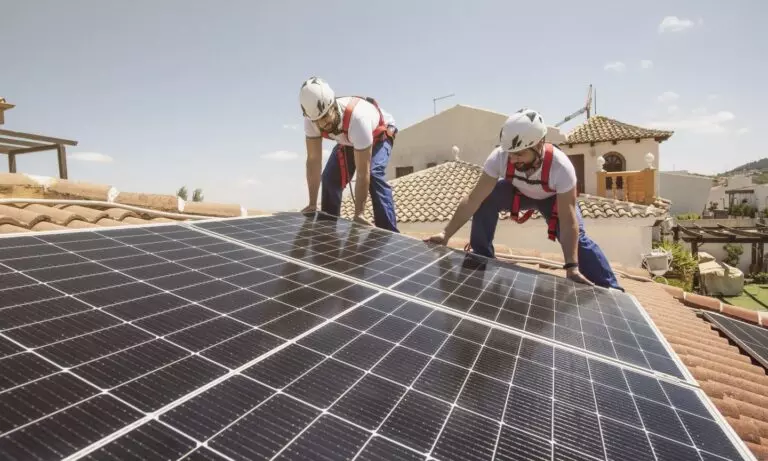A new law, which was passed last year and is now in force as of January 1, 2023, could be a great incentive for those who have been putting off home improvement projects.
Inflation Reduction Act (or IRA) provides tax credits and rebates to homeowners who make energy-saving improvements to their homes. Credits for upgrades such as new windows, doors, and solar panels are available right now. Rebates for more energy-efficient improvements are expected to be available later in the year or next year.
Learn more about these perks and plan your projects.
Tax credits for smaller updates
Tax credits are available for eco-friendly home improvements. Energy-efficient windows, doors and insulation are eligible purchases. An IRS fact sheet outlines eligible home improvements.
According to Michael DiBernardo, a certified public accountant based in Los Angeles, tax credits can reduce your tax liability. A $500 credit can lower your taxes by $500.
Homeowners can get a 30% tax credit through the IRA for energy-efficient upgrades, with a maximum of $1,200 annually. A $2,000 credit is available for heat pumps, heat pump water heating units and biomass stoves.
Take advantage of it: Combining different projects, such as new insulation or a heat pump, can bring you up to $3200, according to Kara Saul Rinaldi (CEO of AnnDyl Policy Group) and a champion of policies that helped create the IRA.
Keep the receipts for every eligible update and add them on to your tax forms. Saul Rinaldi advises.
Increased credits to solar panels
Solar installations also received a credit from the IRA. The 30% tax credit homeowners can receive for the cost of installing solar panels is up from 26%. There is no dollar limit. You can get a $4,500 tax credit if you spend $15,000 to install solar panels on your home.
Unused credit can be carried over to future years.
Take advantage of the tax credit: While it will lower the cost of going green, if you want to reduce your utility bills, you need to first figure out when savings will be realized. According to Duane Knickerbocker of Brower Mechanical in Sacramento, which helps homeowners optimize their energy use, this often depends on the amount you pay.
According to the Center for Sustainable Energy (a policy and research company), solar panels have a payback period of six to nine years.
Rebates for big savings eventually
Knickerbocker explains that the IRA’s “difference-makers” are two new rebates. The first program provides $8,000 to lower the home’s energy consumption and the second offers $14,000 to upgrade electrification such as appliances or breaker boxes.
The rebates, unlike the credits, are offered at the point-of-sale.
Households with low- or moderate incomes — defined by the IRA as households with annual incomes less than 80% of the median in their area — are eligible to receive larger rebates than those who have higher incomes.
You can still receive a discount on energy-efficient upgrades even if you don’t usually owe taxes or can’t use the IRA credit, Saul Rinaldi explains.
Take advantage of it. It will take at least months before homeowners are eligible for the rebates.
To determine which projects you should start, do a home energy audit. Saul Rinaldi suggests that you use the savings to fund home improvements for next year and the following.
Financing energy efficient home improvements
Other assistance. The North Carolina Clean Energy Technology Center maintains a database that contains state and local incentives, including rebates for solar installations and low-interest loan programmes.
0% interest credit card To qualify, you must have good credit or excellent credit.
Home equity. A home equity loan or credit line can be used to finance bigger projects like solar panels. Although rates are typically lower than personal loans or credit cards, your home is the collateral.
Personal loans. Some lenders offer funds as soon as the loan is approved.
This article was written and published originally by The Associated Press by NerdWallet.
